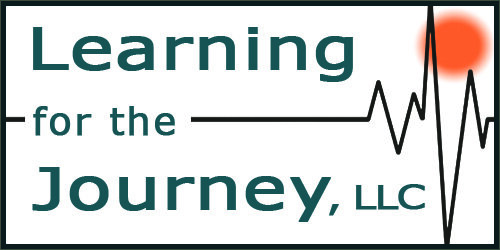The Quiet Job Search
You have made the decision to find a new job. However, you want the timing to be yours. Here are five steps to take to make this a reality - thoughtfully and professionally.
Step 1: Clarify your thinking in writing or electrons
Why are you leaving? Think this through. Is it just the money, or is it about psychological safety, feeling valued, autonomy, decision-making authority, the nature of the work, the physical requirements, or the time demands of the job? The clearer you are about what is really driving this desire to make a move, the more likely you are to "land well."
What are you seeking? What is the perfect job for you, at this point in your life? Obviously, there is no "perfect job" but having a clear vision of what kind of work would feed your soul as well as pay your bills is invaluable as you move deliberately into the "job seeker" role and beyond.
What are the boundary conditions you are willing to accept? These are the cold, hard practical criteria for a new position. They might include salary, insurance, travel, location, work content, hours per week, supervisory responsibilities, or even title. These insights will help you narrow the focus of your job search and preserve your time and energy. All too often, people jump from one job to another and within months find out they are right back where they were.
What are the consequences of your current employer finding out that you are a "flight risk"? It is important to think through what happens if your "boss" or "HR" or coworkers learn that you are looking for a new position. There is a wide range of responses, each unique to the situation. However, being clear about this will help guide your job search strategy and as well as help you prepare "just in case."
Step 2: Craft your story(ies)
It is incredibly helpful to craft and then practice the public story you are going to tell about the new work you are seeking and why. There are some key "rules" for these stories:
Take the moral high ground. Do not talk ill of your current employer, no matter the circumstances. While your family and friends may know the details, putting a good public face on this will earn you professional and personal respect.
Be positive. Focus on what you are seeking, not on what you are fleeing. You want to be seen as a positive person, not a whiner or victim.
Develop the key themes. Think through the 2 or 3 key messages so that you can weave them into discussions in a variety of settings - social, professional, "friends and family," or the accidental encounter in the grocery store.
Practice. Practice telling your story about what you are seeking and why until you can do it naturally and with credibility. This is a particularly important step if you are leaving a toxic work setting and carry a lot of negative emotional baggage. This helps, not just in terms of the job search, but as a way to calm your own thoughts and to engender a greater sense of agency or control over your life.
Step 3: Update and Tailor your resumes (paper and virtual)
Create or update your resume. Take time to create or recreate a new resume tailored to the job you are seeking. Explicitly showcase how your qualifications and past experience are connected to the desired position. Make sure you have a professional, personal email address.
LinkedIn. The key to finding a professional job today is LinkedIn. Once you have your resume updated, translate it into a LinkedIn profile. While there are countless LinkedIn guides and classes, here are the key elements for “the quiet job search”.
Good profile picture. No selfies, no animals, no jock. Professional. Friendly and approachable. Dressed "one step up" from the job you desire.
The image behind the profile picture. Put an interesting image behind your profile picture. This is particularly important for older job seekers as it demonstrates computer literacy.
Contact information. Be sure that your personal email and cell show up on your contact information. Make it easy for a recruiter or employer to reach out. As an aside, be sure your voice mail has a professional, friendly message and is not full!
At least 501 connections. This is not Facebook. You can (and should) seek professional connections widely. However, don't start this drive for connection until you get your picture, background image, contact information, profile, and work history (aligned with your resume!) in place.
Social Media. Review all of your social media back at least two years. Employers are going to look at this to see what kind of person you are. If they find evidence of racism, sexism, homophobia, foul language, or extreme politics, they will pass you by and you'll never know it. Delete the posts or lock down the accounts.
Step 4: Discretely expand and engage your network
With a clear vision, a good story, and updated resumes (physical and virtual), you are ready to actively expand your professional network. Look for opportunities to meet and talk with other like-minded professionals. These may be in informal or formal social situations, in civic, church, or sports settings. Just "be out and about". Understand, that finding the best job for you is as much a human as it is a technological undertaking.
Listen to the stories of others who are working in the field or with the organization you are interested in. Ask genuine questions. Seek advice if appropriate.
If you can afford to do so, join one or more relevant "trade" or professional organizations. Show the affiliation on your LinkedIn and resume. Engage, don’t just pay your dues.
When people ask you "what do you do?" (as they inevitably will), be prepared to respond with right now I am doing XXX but I am thinking of making a career change. This is a place to share your aspirations for something new with careful attention to not say anything negative about your current employer,
Step 5: Ramp it up
At some juncture, you may have to be more open about your job search. There are two good options:
LinkedIn. You may choose to add the LinkedIn "Open to Work" green circular banner to your account. There is an option to have it only visible to recruiters and not the general public. LinkedIn tries to keep your current employer's recruiters from seeing it, but there is no way to guarentee privacy.
Job Boards. While there are many good job boards on the Internet, my favorite two are Indeed and ZipRecruiter. If you are transitioning military, a Veteran, or a member of the Guard or Reserves, I would also recommend RecruitMilitary and, if you have a clearance, Cleared Jobs. Post your resume and then revisit it every few weeks to be sure it is still up-to-date. There is a caution here, if your resume is publicly visible to recruiters and hiring managers on these job boards, your employer may well become aware that you are intending to leave. However, if you have done everything listed in these five steps, you are well on your way to a better-fitting job.
The final advice before moving to a new position is to "leave well." While it might be satisfying to leave with an "I'm out of here" speech and a gesture, it will come back to haunt you. As they say in Special Operations - don't burn a bridge you may have to recross!

